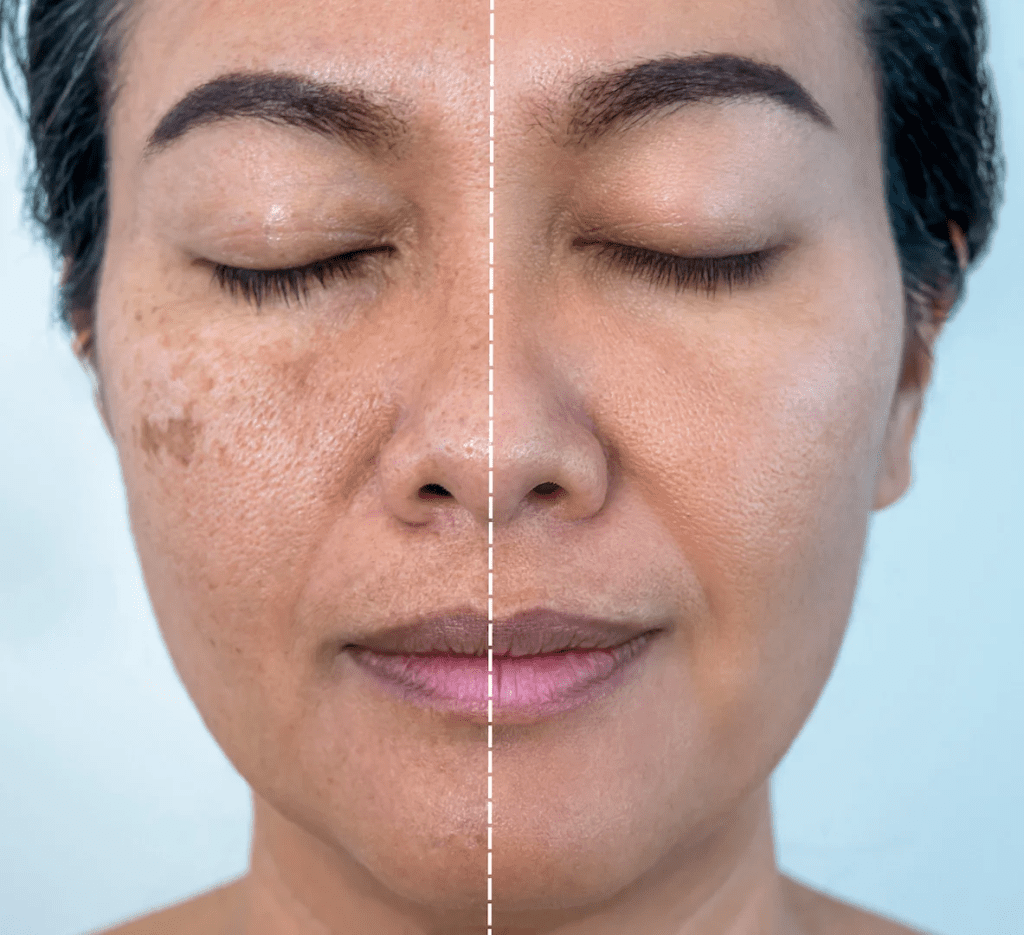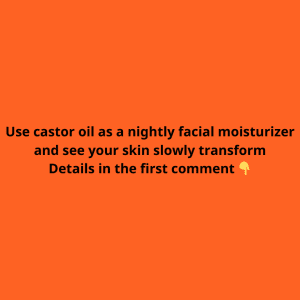Melasma is a common skin condition characterized by brown or grayish patches, often appearing on the face. While harmless, these dark spots can be a cosmetic concern for many people. Understanding the causes, symptoms, and treatments of melasma is crucial for those seeking to manage or prevent it. In this article, we will dive deep into the nature of melasma, how it develops, and the most effective ways to treat and prevent it.
What is Melasma?

Melasma is a type of hyperpigmentation where darker patches of skin develop, most commonly on the cheeks, forehead, nose, and upper lip. These patches are caused by an overproduction of melanin, the pigment responsible for your skin’s color. Although melasma can affect anyone, it is more prevalent in people with darker skin tones, particularly those of Hispanic, African, Asian, or Mediterranean descent. Additionally, women are more likely to experience melasma due to hormonal influences, particularly during pregnancy or when using birth control.
Despite its appearance, melasma is not a dangerous condition. However, many individuals seek treatment for cosmetic reasons, wanting to even out their skin tone and reduce the prominence of these dark spots.
Types of Melasma
There are three main types of melasma, categorized based on the depth of pigmentation in the skin.
- Epidermal Melasma: This type affects the epidermis, or the outer layer of the skin. The dark patches are more defined and respond better to treatment because the pigment is closer to the skin’s surface.
- Dermal Melasma: Affecting the deeper layer of skin known as the dermis, this form of melasma is more challenging to treat. It often appears as more diffused, less defined patches and may be accompanied by thickened, wrinkled skin.
- Mixed Melasma: This is the most common form, involving both the epidermis and dermis. As a result, treatment can be more complex, requiring a combination of approaches to achieve noticeable improvements.
Understanding which type of melasma you have is important because it will influence the treatment plan your healthcare provider recommends.
Symptoms of Melasma
Melasma is most easily recognized by the presence of dark, irregular patches that usually appear symmetrically on both sides of the face. These patches are often more prominent on areas of the skin that receive more sun exposure, such as:
- Cheeks
- Forehead
- Nose
- Upper lip
- Jawline
In some cases, melasma can also appear on the neck and forearms, although this is less common. The condition does not cause pain or discomfort, but for many, it can affect self-esteem and lead to emotional distress. This is particularly true for individuals with more severe cases or who experience melasma in highly visible areas of their face or body.
What Causes Melasma?
The exact cause of melasma is not fully understood, but several factors can contribute to its development.
- Sun Exposure: Ultraviolet (UV) rays from the sun are a significant trigger for melasma. UV rays stimulate the production of melanin, leading to the dark patches that characterize this condition. This is why melasma often worsens during the summer months and improves in winter when sun exposure is reduced.
- Hormonal Changes: Hormones play a major role in the development of melasma. Pregnancy is one of the most common triggers, which is why melasma is sometimes referred to as the “mask of pregnancy.” Hormonal contraceptives and hormone replacement therapies can also contribute to melasma’s appearance.
- Genetics: If you have family members with melasma, your risk of developing it is higher. Genetics may influence how your skin responds to hormonal changes and sun exposure, making you more prone to hyperpigmentation.
- Medications: Certain medications, such as birth control pills and hormone replacement therapies, can increase your risk of developing melasma. Some retinoids, antibiotics, and even blood pressure medications can make the skin more sensitive to the sun, which can lead to melasma.
- Stress: Elevated stress levels increase the production of cortisol, a hormone that can contribute to hormonal imbalances and worsen melasma in some individuals.
- Thyroid Dysfunction: An underactive or overactive thyroid can affect your hormone levels, potentially triggering melasma.
Who is Most at Risk for Melasma?

Melasma can affect anyone, but some groups are more susceptible to developing the condition. Risk factors include:
- Gender: Women are significantly more likely to develop melasma than men, largely due to the influence of hormones.
- Skin Tone: Individuals with darker skin tones produce more melanin, making them more prone to hyperpigmentation.
- Family History: If melasma runs in your family, your likelihood of developing it increases.
- Hormonal Changes: Pregnancy, use of oral contraceptives, and hormone replacement therapy can trigger melasma due to fluctuations in hormone levels.
How is Melasma Diagnosed?
Diagnosing melasma typically involves a visual examination by a dermatologist. In some cases, they may use a Wood’s lamp, which emits ultraviolet light to help distinguish between epidermal and dermal melasma. This test allows the healthcare provider to assess the depth of pigmentation and determine the most appropriate treatment.
In rare cases, a skin biopsy may be performed to rule out other skin conditions that cause similar symptoms. Additionally, blood tests may be used to check for thyroid dysfunction or other hormonal imbalances that could be contributing to melasma.
Effective Treatments for Melasma

Although melasma can be persistent, several treatments can help reduce its appearance. The effectiveness of these treatments varies depending on the type of melasma and the individual’s skin type.
- Sun Protection: The most crucial step in treating melasma is protecting your skin from UV rays. Use a broad-spectrum sunscreen with an SPF of 30 or higher, reapplying throughout the day. Wearing wide-brimmed hats and avoiding direct sunlight can also help prevent further pigmentation.
- Topical Medications: Hydroquinone is a popular prescription treatment for melasma that works by lightening the skin. Other options include retinoids, corticosteroids, azelaic acid, kojic acid, and vitamin C, which can help even out skin tone and reduce pigmentation.
- Chemical Peels: These treatments involve applying a chemical solution to the skin, which causes the top layer to peel off, revealing fresher, lighter skin underneath. Peels can help lift pigment from the epidermis, making them more effective for superficial melasma.
- Microneedling: This minimally invasive procedure uses tiny needles to create micro-injuries in the skin, promoting collagen production and increasing the absorption of topical treatments.
- Laser Therapy: Lasers can target and break up excess pigment in the skin. However, this method can sometimes cause heat-induced melasma to worsen, so it is important to consult with an experienced dermatologist before opting for this treatment.
- Platelet-Rich Plasma (PRP): PRP involves using the patient’s own blood plasma, which is rich in growth factors, to rejuvenate the skin and reduce pigmentation. This treatment has gained popularity in recent years as a non-invasive option for melasma.
- Tranexamic Acid: For severe cases of melasma, tranexamic acid may be prescribed. This medication can be taken orally or applied topically and is used to prevent blood vessels from contributing to pigmentation.
Preventing Melasma: Key Strategies
Preventing melasma often boils down to diligent sun protection. This means wearing sunscreen every day, even when it’s cloudy, and reapplying it regularly when you’re outdoors. Wearing protective clothing, such as wide-brimmed hats, and seeking shade whenever possible are also critical steps to protect your skin from UV exposure.
Additionally, if hormonal changes or medications are contributing to your melasma, talk to your healthcare provider about alternative treatments. For some, switching birth control methods or managing thyroid conditions can help prevent further pigmentation.
Living with Melasma

While melasma may not be harmful, it can affect an individual’s self-esteem and mental health. Research has shown that people with melasma may experience higher rates of anxiety and depression due to the visible changes in their appearance. Fortunately, effective treatments and preventive measures can help reduce its impact and improve quality of life.
Remember, melasma is a chronic condition that may take time to improve. It is essential to manage your expectations and work closely with a dermatologist to find the best treatment plan for your specific skin type and condition.
Conclusion
Melasma is a common and benign skin condition that primarily affects women with darker skin tones. While it can be persistent and frustrating, there are effective treatments available, including topical medications, chemical peels, microneedling, and laser therapy. Most importantly, practicing diligent sun protection is key to preventing and managing melasma. By understanding the causes and treatments, you can take control of your skin health and reduce the appearance of melasma over time.


